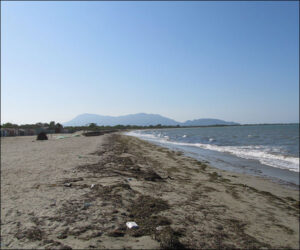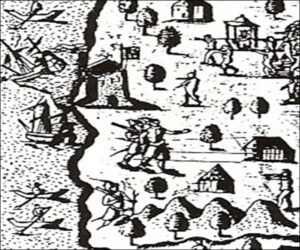As the moon rose on November 27, 1493, 528 years ago, Columbus recognized the landmarks indicating that the fleet approached Navidad, including the great cape to the west he’d named Punta Santa (Point Picolet, at Cape Haitien, Haiti), the line of reefs upon which the Santa María had sunk, and the beaches nearby Chief Guacanagarí’s hometown, Guarico (now modern Bord de Mer de Limonade, Haiti). By 10:00 p.m., the ships hove to offshore the beaches. No fires ashore were visible. Columbus ordered the discharge of cannons, but there was no response from Navidad.
The first photo shows a portion of the beaches, where Guacanagarí and Columbus met on the first voyage, with the great cape in the distance. The second shows the reefs nearby the cape, the third a street near Bord de Mer de Limonade. The fourth is an illustration (included in Columbus and Caonabó) of Guarico and Navidad as Columbus had left them on the first voyage, taken from Antonio de Herrera’s Historia General, 1601.




